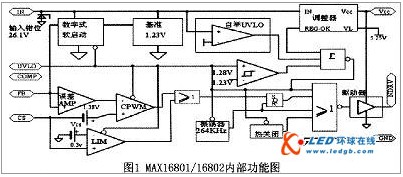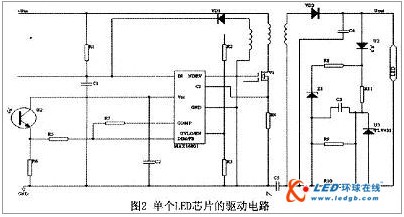As the latest lighting technology, LED has its advantages not only in terms of lighting quality, but also greatly surpasses traditional light sources such as incandescent lamps and fluorescent lamps in terms of production, manufacturing and ease of use. Inspired by the principle of fluorescent lighting, LED manufacturers use a blue phosphor to excite phosphors to emit white light by adding a layer of phosphor to the high-brightness blue LED die. In addition, by using different phosphors, a variety of white LEDs with a color temperature of 4500 to 10000K and a color temperature of 2850 to 3800K can be emitted. The luminous efficiency of white LEDs has exceeded 301m/W, and some products have exceeded the level of 50lm/W. It has the basis for formal large-scale practical use. The RGB three-color LED synthetic white light has good comprehensive performance. Under the high color rendering index, the lumen efficiency may be as high as 2001m/w. The main technical problem to be solved is to improve the electro-optical conversion efficiency of the green LED, which is currently only about 13%. For the LED-excited phosphor illuminating, the three-primary color mixing can avoid the disadvantages of discontinuous spectral distribution and poor color rendering of the former, and the comfort of the human eye of the three primary colors can be greatly improved, and can be modulated by the three primary colors PWM. Multi-color and full-color illumination at the same source as needed. 4, drive circuit design The whole circuit is divided into three parts: a. Switching power supply, realizing the conversion of commercial power to low voltage constant current LED; b. PWM modulation circuit to achieve control of LED light output efficiency; c. Control circuit to realize switching power supply and PWM Connection and control to achieve control of the gray output of the light after mixing. 4.1 AC/DC switching power supply based on MAXl6801/16802 High-brightness (HB) LED driver control integrated chip MAXl680l/16802 basically meets the requirements of the actual LED driver key circuit, can be used for high-brightness illumination and display applications, can be AC-rectified voltage input of 85~265V, need to adjust the LED current with precision An on-chip error amplifier and a 1% accuracy reference can be used. A wide range of brightness adjustments can also be achieved with on-chip PWM brightness adjustment. The driving circuit of a single LED chip is shown in Figure 2.
1. Design concept and plan
Designing high-power semiconductor drivers, first of all from the choice of light-emitting chip and light source; drive circuit design, secondary optical design; equipment packaging three aspects.
In the LED lighting, there is a successful design case of monochromatic LED to stimulate phosphor light emission, but considering this scheme is difficult to achieve full spectrum, high color rendering, in this design, RGB three primary color mixed light source, and red The three green and blue monochromatic LED chips are separately driven to realize the completion of the light source. In order to meet the illuminance stability under high-power output, it is necessary to compensate for the LED temperature attenuation, and also to compensate for the unstable fluctuations of the surge pulse and current at startup. In the secondary optical design, the three primary colors are mainly mixed, and the fiber coupling is selected in the comparison of the integrating sphere mixing and the fiber coupling, and the light of the three color chips is coupled and output by the fiber coupling.
2, LED optical characteristics and electrical characteristics
For the characteristics of super bright LEDs, when the forward voltage exceeds a certain threshold (about 2V), that is, the so-called turn-on voltage, it can be approximated that IF is proportional to VF. The current maximum IF of super bright LEDs is up to 1A, while VF is usually 2~4V. Since the light characteristics of LEDs are usually described as a function of current, not as a function of voltage, constant current source driving can be used to better control brightness. . In addition, the forward voltage drop range of the LED is relatively large (up to lV or more), and a small change in VF causes a large IF change, which causes a large change in brightness. Therefore, the use of constant voltage source drive can not guarantee the consistency of LED brightness, and affect the reliability, life and light decay of LED. Therefore, super bright LEDs are usually driven by a constant current source. The luminous flux of an LED is inversely proportional to temperature. The luminous flux at 85 ° C is half that at 25 ° C, and the light output at -40 ° C is 1.8 times that at 25 ° C. The change in temperature also has a certain effect on the wavelength of the LED. Therefore, good heat dissipation is a guarantee that the LED maintains a constant brightness.
3, mixed light scheme
The three-primary additive mixed light means that the three primary colors of light can be mixed to obtain a white light source and grayscale light. For LEDs, according to the chromaticity diagram published by the International Commission on Illumination CIE, the color of light is related to the ratio of the three primary colors R, G, B, and there are r(λ)+g(λ)+b(λ)=1.LED The main problem of adopting RGB synthetic white light is that the conversion efficiency of green light is low. Now the conversion efficiency of red, green and blue LEDs reaches 30%, 10% and 25% respectively. Because of the different color temperature and color rendering index required for synthetic white light, The efficiency of lumens of various colors of synthetic white light is also different. When different ratios of pulse width currents are provided to the three light-emitting chips, illumination sources of different gray levels can be output, and if multi-level gray scale calculation is implemented for the light mixing ratio, full color dimming can be approached. In order to improve the light mixing efficiency, common solutions include integrating sphere mixing and mixing rod mixing. In order to reduce the package size of the device, the solution uses fiber-coupled light mixing, even if the light emitted by the three chips is injected into the fiber at the focus through the convex lens, and the light is mixed in the fiber, and the mixed light is sent out to the concave lens output through the fiber.
The internal functions of the MAXl6801/16802 are shown in Figure 1.


July 01, 2019